Anand Goes Hands On with Motorola's Atrix 4G Webtop
by Anand Lal Shimpi on January 7, 2011 5:06 AM ESTToday I was finally able to spend some time with Motorola’s Atrix 4G and its webtop dock. For those of you who don’t know, earlier in the week Motorola announced its first Tegra 2 based smartphone: the Atrix 4G. Motorola later announced another Tegra 2 based smartphone, the Droid Bionic, however the Atrix 4G is its flagship smart/superphone.
Equipped with a full GB of memory and 16GB of NAND, the Tegra 2 based Atrix 4G has one very unique feature: it can be docked into a custom ultra thin notebook chassis and used to drive the notebook. Motorola calls this its webtop dock:
The webtop dock looks like an oddly shaped, ultra thin notebook. The Atrix 4G’s dock remains hidden until you flip it up. Slide the Atrix 4G into place and within several seconds you’ll automatically be dropped into the webdock app:
The webdock app is a unique environment. You get a scaled down version of your smartphone desktop on the left side of the display, while on the right side you get a full fledged Firefox browser compiled for ARM.
Browsing performance isn’t great, but it’s not unusable. The large trackpad supports scrolling with two fingers, or you can tap space to jump down a full page just like you can on a desktop/notebook.
There’s an OS X-like dock along the bottom of the screen that lets you fire up other apps (e.g. file system browser) or switch between open applications. You can also alt+tab between applications. Doing so will bring up an OS X Exposé like screen and not-so-smoothly animate tabbing through windows. It’s not a full blown PC experience, but it is honestly workable.
If there are apps within your phone that you want access to you can simply take the phone window full screen. You can even rotate it without moving the webtop:
Of course in this mode you are simply upscaling the phone’s 960 x 540 resolution to the webtop’s panel resolution (which I believe is either 1280 x 800 or 1366 x 768).
When you’re done with webtop mode, simply close the lid and your phone returns to normal. Motorola saves the state of your webtop so when you dock your phone again you get the exact same windows open as you had previously. Motorola insists that your webtop state is saved regardless of what you do to the phone as long as you don’t remove the battery - implying the webtop state is saved to NAND.
The Atrix 4G will ship with an entertainment center app that can be used in webtop mode. It’ll give you access to all media content on the phone and let you play it back on the webtop (or when used in the media dock and connected to an HDTV). NVIDIA’s Tegra 2 can decode high bitrate 1080p, however I don’t believe it supports decoding high profile H.264 1080p - only main and base profile content. We’re almost at the point where you can play anything on your smartphone, but I suspect it’ll take another two years or so before we are completely there on the high end phones.
Motorola ran through a quick demo of a Citrix app running on the docked Atrix 4G, giving us remote access to a Windows 7 PC on the smartphone powered webtop. The entire solution is clearly very functional, the question is whether or not it’s going to tempt users away from a netbook or other PC solution.
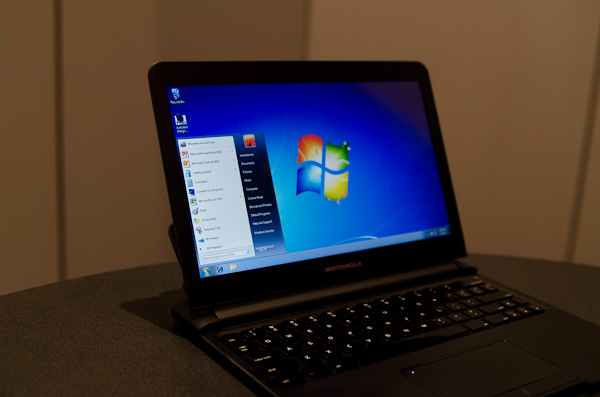
Windows 7 piped over the internet, display and interaction powered by Motorla's Atrix 4G - yep, a smartphone giving you access to a Windows PC
There’s clearly a lot of potential with these ARM based devices and over the next three years we’re going to see them get even more powerful. NVIDIA’s vision is a future where mainstream PCs are smartphones docked (perhaps wirelessly) to larger displays and input devices. Motorola took a major step in that direction at this year’s CES.
Within 24 months we will have quad-core out-of-order ARM based microprocessors in our high end smartphones. If paired with an elegant dock solution that’s affordable, will that be enough to go head to head with a netbook?

It works! But a Chrome OS Notebook feels quicker, which will win?
Personally I can see it going either way. While the docked smartphone is definitely compelling, one of the major reasons to want to dock a single device and use it in multiple locations is if the content on that device is 1) large, 2) plentiful and 3) difficult to move around otherwise. I’m not sure smartphones today have enough content on them for this to inherently make sense. Now when smartphones ship with 100GB of storage in a few years...
The biggest question in all of this is what happens to Intel and AMD as ARM tries to move up the chain. One thing is for sure, Intel’s Atom strategy, at least today, isn’t aggressive enough. For a company less than a year away from transitioning to 22nm, there’s no excuse for Intel to continue to ship Atom at 45nm.


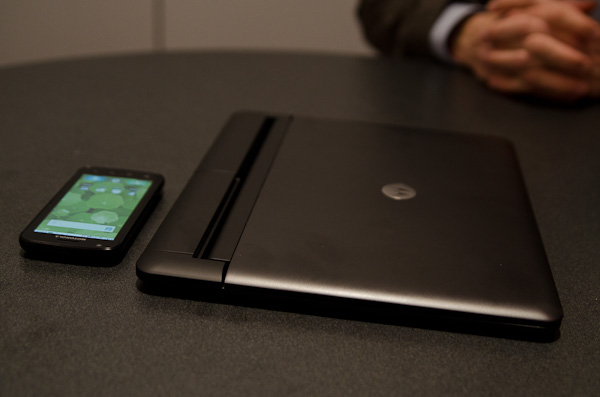
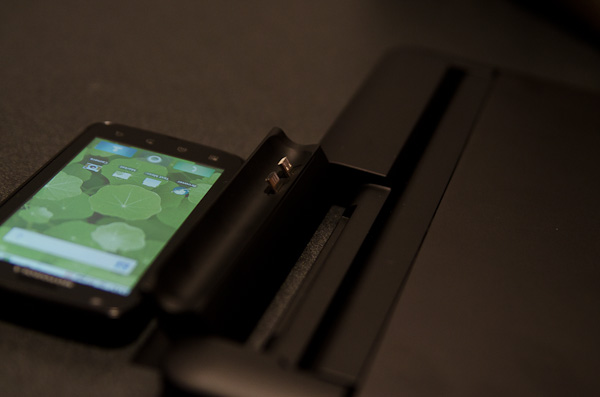
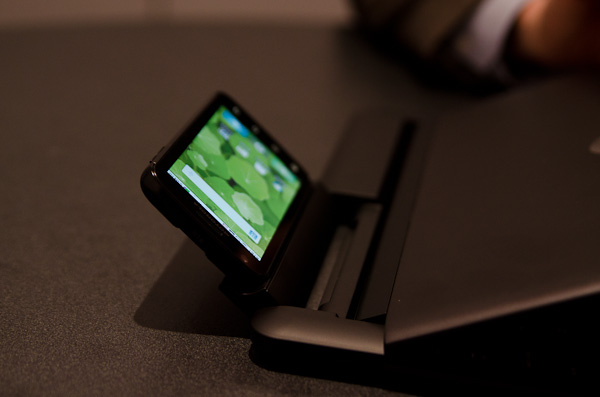
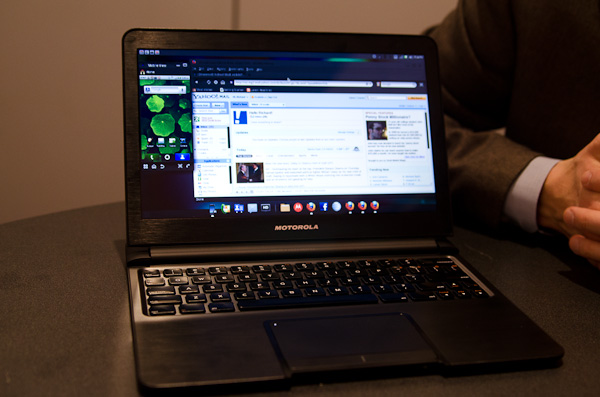
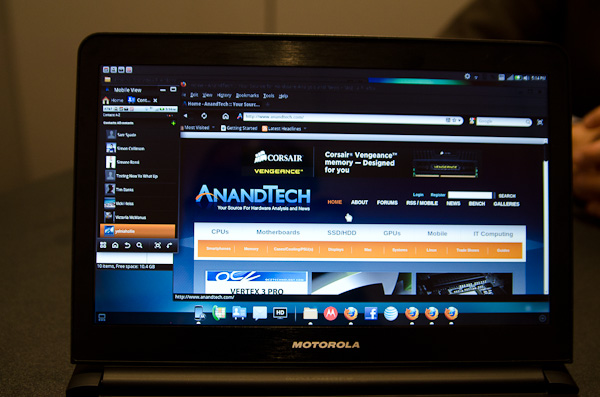
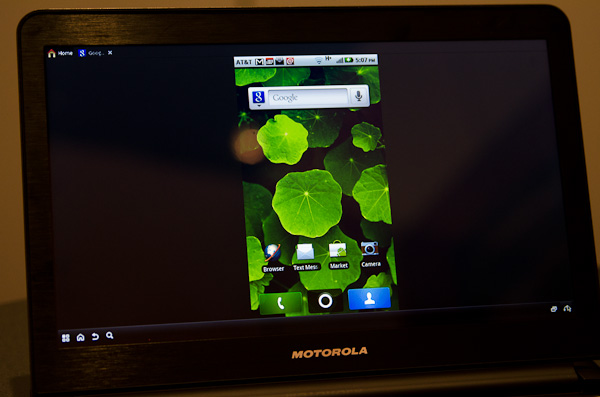
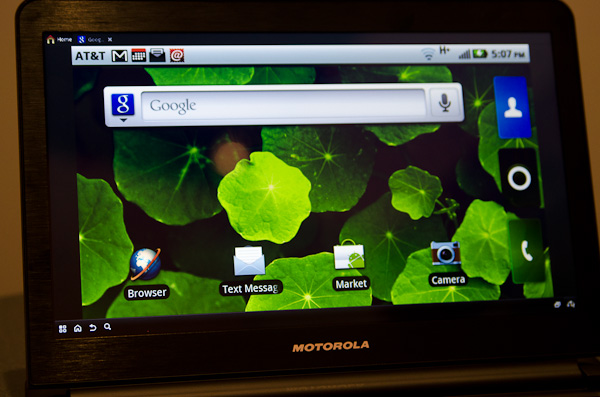
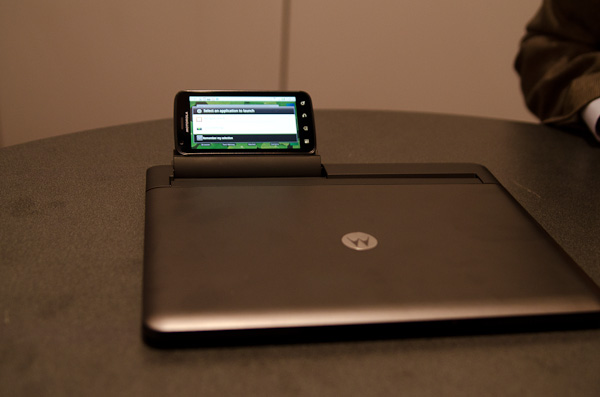
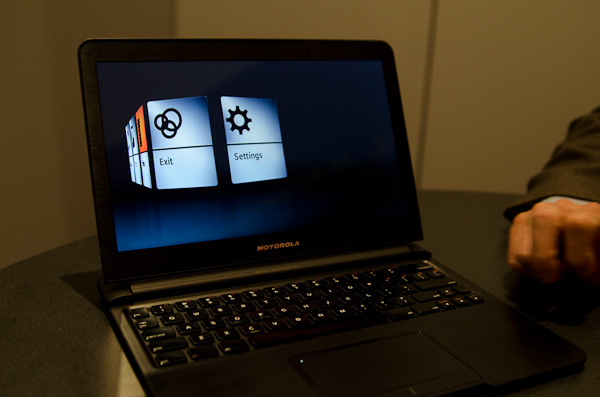








62 Comments
View All Comments
Penti - Friday, January 7, 2011 - link
It looks good, but I fail to see the point though. Just a 100 dollars more would give you an ARM/x86|ATOM board in there too.Something like a Chrome OS notebook which can sync with the Phone would be better. Just the screen would be one of the highest cost component in a device like this anyway. Just using the phone for mobile internet access would save some 100 dollars though. A thin client laptop which can sync up with the phone I think would be useful.
Penti - Saturday, January 8, 2011 - link
My point was just that you could create a useful device, a mobile thin client is a great idea. And of course nothing new. Where other non-win thin clients (and win to a degree) failed Chrome OS notebook shows what needs to be done, you need a fully fledge browser that's run locally, access to native multimedia features (as they don't work over a remote connection) and so on. A cheap MIPS or ARM SoC is all that's needed to be put in, the "dock" already has a battery in it. Extra 50-100 dollars would justify it, get access to 4G and GPS via the phone or something and you don't have to tether the device to some expensive data-plan. If done wirelessly you could still make and receive calls. And maybe you could store all the settings on the phone so you don't need to administrate the thin client separately. You can still tie it into the phone or use the same software resources for the different products. An additional SoC won't really complicate it. Besides they are already creating a software stack that could be used for their tablets. Its no more difficult to run Citrix Receiver on that one. It's already out in the wild in phones and other tablets already. Having a keyboard and trackpad would be greatly beneficial for this kind of remote work / browsing full size though. But of course it's kinda useless if the user already has a notebook for remote work. But a thin client solution would still attract those who work or like to work in other ways. But this don't look like a real product anyway.bezgranicaha - Saturday, January 8, 2011 - link
I just want to thank you for create the best forum. Gracias adminos!need good e-mail? - test http://www.o2.pl">poczta
:)
TareX - Saturday, January 8, 2011 - link
No way will the dock cost $250, or $150. I give it a maximum of $99.Penti - Monday, January 10, 2011 - link
It's got a 11.6" screen and a battery in addition to keyboard and touchpad, it's definitively hundreds of dollars. The wireless keyboard might be closer to 99.TareX - Monday, January 17, 2011 - link
Not with netbooks going on sale for $199.has407 - Sunday, January 9, 2011 - link
"One thing is for sure, Intel’s Atom strategy, at least today, isn’t aggressive enough."Sorry, but that's a bit trite. Maybe in the heat of CES, but I suggest and look forward to your reflection and thoughts in a future article after the CES dust has settled...
It obviously isn't aggressive enough for you, and I'd say the same--at least if Intel is serious about the mobile market. But those are conscious decisions Intel made--for better or worse--some a long time ago, some more recently. And without a lot more data, it's impossible to say whether their strategy is aggressive enough, especially given all the other Intel markets...
1. Intel can not be all things to all people. As I've posted before, that is IMHO the Achilles heel in their business/licensing model vs. ARM. ARM has a far more robust ecosystem when tightly integrated (high-performance/low-power) solutions are required (i.e., SoC's). The Atom Intel/TSMC JV is apparently dead (due to customer concerns over sharing info with Intel?), and now the best we have is Atom FPGA; a non-starter in the mobile space and likely to go the way of the Dodo.
2. Intel has to make tradeoffs, and they obviously have. Would be very interesting to know what Intel's fab allocation looks like. Is Atom simply stuck in the queue waiting for 32nm capacity behind other (higher margin) parts waiting for them to transition, or is there a more fundamental reason? Can't help but think it's more of the former than the latter...
3. Atom got pushed back, Bobcat got pushed forward, while ARM pushes up. If you're into the mobile space, that pretty much says it all. OTOH, the war won't be won or lost based on one CES--although given the domination by Android-ARM-Nvidia it must be very depressing for everyone else. As cfaalm suggested, AMD and NV seem to get it, but Intel seems to need a whack upside the head (at least for the mobile market); maybe this is it.
4. If it was a choice between pushing Sandy Bridge et. al. back 6-9mo and bringing 32nm Atom forward (specifically, smartphone SKU's)--what would you do? Especially given that you're going to break Tick-Tock, anger a lot of OEMs, and reduce your margins and profitability substantially if you delay SB et. al. (at least in the near term)? Is the situation that dire or is this a battle that Intel can delay? I certainly don't have access to Intel's financial/market models, but I would hope and expect they've made informed decisions.
That said, I think Intel's mobile strategy must be either: (a) so carefully crafted and so complex and Byzantine as to be opaque to mere mortals; (b) hopelessly confused; or (c) ruled by inertia. I'd guess (c), and while I think they can overcome that inertia technically in fairly short order (as they have before), that won't help with more fundamental business model problems.
trip1ex - Sunday, January 9, 2011 - link
in a million years.What if you get a phone call? You have to talk to your laptop?
Or shut it and take out your phone and then ... no laptop connection?
Maybe I want to look at some info on my laptop while talking on the phone? Or I want to leave the room quickly. etc.
IT's a messy solution.
Plus experience shows this type of "dock" ain't going to be cheap. The price will then be in netbook territory and maybe Ipad territory.
Nah you can just transfer your information to your computer. To your laptop. To your Ipad. .....
It won't take long. No one will need to be transferring video back and forth from smartphone to computer all the time.
And what if you lose your phone? Or decide to get a different phone? ......
I'm telling you. NEver going to happen in a million years.
Nerd's wet dream is all the farther this solution gets.
NeoUser - Monday, January 10, 2011 - link
I wanted this since the first time I saw the first Newton from Apple. I recall thinking to myself: "Why the heck do I want a Newton?". Then it occurred to me that if it were the actual core of a PowerBook that I can undock and take with me, then I'd want one.appliance5000 - Thursday, January 13, 2011 - link
This is a great idea -and they thought of it - invested millions in engineering - and then excreted this horror. If Apple can make a full fledged computer that weighs 1.5 lbs with a tiny elegant foot print - why is this dock station such a big ugly balky POS. Here's how this will go:In 2 years Apple will produce a simple 1 pound slice of aluminum, that functions seamlessly, and steal the market.
The trolls will bemoan how Apple "stole the idea" when - in fact - they simply made something people WANT to use, thus something people WANT to have.
When will these companies learn this simple lesson? Are they really so very stupid. Will their stupidity condemn us to a future of itunes mediated media consumption? Pisses me off.